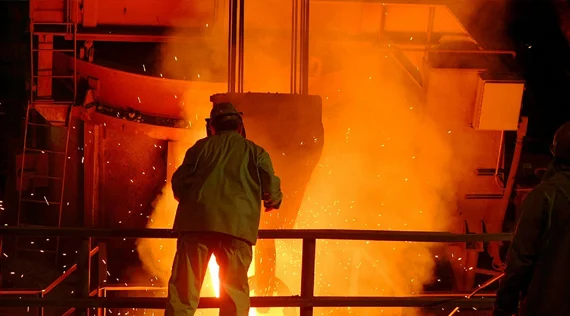How the Section 232 Tariffs on Steel and Aluminum Harmed the Economy
Aluminum | 2024-05-24 11:55:45
In many cases, firms may face the tariff-burdened price even if the type of aluminum itself is not covered by Section 232.
SEATTLE (Scrap Monster): President Trump was not the first president to target steel imports. In the late 1970s, the Carter administration imposed “antidumping” or countervailing duties on steel imports from Japan if imports fell below a specified price. Eventually, President Reagan negotiated a quota system through voluntary export restraint agreements with Japan and other trading partners. Research by economists Stefanie Lenway, Randall Morck, and Bernard Yeung found that these trade actions increased rent-seeking by less productive steel firms and reduced R&D spending and innovation. As of May 2024, 304 anti-dumping and countervailing duties orders are in place for steel-related imports, and 68 for other metals and articles of metal.
In 2002, President Bush imposed tariffs on steel ranging from 8 to 30 percent after a Section 201 investigation concluded that current steel imports posed “a substantial threat of serious injury” to the steel industry. The tariffs were scheduled to be in effect for three years, but President Bush rescinded them after two, fearing retaliation from other countries after the WTO ruled that the tariffs violated international commitments.
Nonetheless, even in the brief window that the tariffs were in effect, economist Lydia Cox concluded that they had persistent negative effects in “downstream” industries that use steel as intermediate inputs. Rather than absorbing the tariffs, foreign exporters passed them almost entirely to U.S. firms. For industries that were highly exposed, exports fell sharply during the period the tariffs were in effect and remained depressed even after they were lifted for the next eight years. Given how disruptive tariffs are to trade patterns, even temporary ones can generate lasting effects.
Because there are many more steel-consuming than steel-producing industries in the U.S., the Section 201 tariffs likely lowered manufacturing employment. Economists Joseph Francois and Laura Baughman estimated that the Bush tariffs decreased employment by between 50,000 and 197,000 workers, depending on the definition of steel-consuming industry used.
The U.S. International Trade Commission (USITC) found comparatively smaller effects, estimating a less than 0.01 percent hit to GDP, which implies a smaller employment loss. Nonetheless, the tariffs themselves can be quite onerous for the exposed industries. For example, the USITC found that returns to capital declined by more than $600 million in steel-consuming industries.
The Economic Effects of the Trump and Biden Section 232 Tariffs
Broadly, economists have reached negative conclusions regarding the impacts of the recent Section 232 tariffs on the economy. Lydia Cox and Kadee Russ, using an estimate derived from a Federal Reserve Board paper, calculated that the Section 232 tariffs reduced manufacturing employment by about 75,000 jobs. Kyle Handley and other economists looked at the impacts of the import tariffs on export growth in the U.S. and found that companies exposed to the Section 232 tariffs experienced reduced export growth. This occurred because the cost of their inputs rose due to the tariffs, which hindered firms’ ability to increase their exports. For each 1 percent increase in the tariffs on steel and aluminum, export growth fell by 0.11 percent.
The Peterson Institute for International Economics concluded that the tariffs would only create about 8,700 jobs in the steel industry and would come at a high cost as well. The Section 232 tariffs would raise aggregate income in the steel industry by about $2.4 billion in 2018 but raise costs for steel consumers by about $5.6 billion. This implies a cost of nearly $650,000 for every job created.
Contrary to the intentions of the policy’s creators, it is even less clear that the tariffs have aided the communities they were designed to help. Economist David Autor and his coauthors examined the impacts of the Trump administration’s tariffs on commuting zones with industries that faced protection and found that the tariffs failed to raise employment across these communities. They noted that the jobs “saved” in the protected industries were completely offset by jobs lost in the “customer” industries that used tariffed goods as inputs into production. On the steel and aluminum tariffs specifically, they had this to say: “The adverse spillover effect to customer industries may be particularly important for firms that rely on steel and aluminum inputs, given that US tariffs on these products applied to most trade partners and allowed little room for trade diversion.”
The aluminum tariffs in particular have disproportionately harmed certain industries. For example, the beverage industry saw its costs rise by $2.2 billion nearly six years after the tariffs were imposed, with 94 percent going to U.S. rolling mills, U.S. smelters, and Canadian smelters, and the remainder going to the U.S. Treasury, according to one analysis by the research group HARBOR Aluminum. Ford and General Motors estimated that the tariffs cost them about $1 billion each the first year they were in effect—roughly $700 per vehicle produced.
In many cases, firms may face the tariff-burdened price even if the type of aluminum itself is not covered by Section 232. This occurs because firms that use aluminum as inputs typically buy it in bulk, often scrap or recycled content, based on a specific pricing formula. Although recycled content is supposed to be exempt from the tariffs, aluminum producers charge what is known as the “Midwest Premium” price, a benchmark price that accounts for regional variations in supply and demand.
For example, following the immediate announcement of the tariffs, the Midwest Premium price rose by 11.8 percent, larger than the 10 percent tariff on primary aluminum. While broader supply and demand factors determine the price of aluminum, this provides suggestive evidence that aluminum producers may raise prices in excess of tariffs.
The totality of evidence suggests that the costs of tariffs have largely been borne by U.S. consumers and firms. Federal Reserve Board economist Mary Amiti along with other academics found complete pass-through to U.S. consumers and firms the first year the steel tariffs were in effect. In the following years, the pass-through rate fell 50 percent, implying that half of the costs were borne by foreign exporters of steel—mostly the EU, South Korea, and Japan. Although certain exporters lowered prices somewhat in response to the tariffs, U.S. firms and consumers still paid higher prices than they would have without the tariffs. Imports of covered steel declined by 39 percent in the two years following the tariffs, prior to the COVID-19 pandemic, while imports of covered aluminum declined by 24 percent over the same period. Covered steel imports continued to fall until September 2020 and then rebounded significantly, but have since fallen to their 2018 levels. Notably, imports of covered steel recovered much more rapidly than overall U.S. imports, which exhibited a similar upward trajectory as the pandemic began winding down. Covered aluminum imports began rising sharply in early 2021 after bottoming out in August 2020 and continued to increase until the summer of 2022, having now also fallen to their 2018 levels.
To isolate specifically the impacts of tariffs on import volumes and prices, and abstract from the broader trends in the steel and aluminum industries and COVID-related supply shocks, the USITC developed economic models to control for other factors and published a report on its findings in March 2023. While the analysis does not look at broad, economy-wide impacts, as our own modeling does later in this report, it considers the effects of the tariffs on the steel and aluminum industries, as well as the “downstream” industries that use steel and aluminum in production.
Courtesy: www.taxfoundation.org
 By
By 